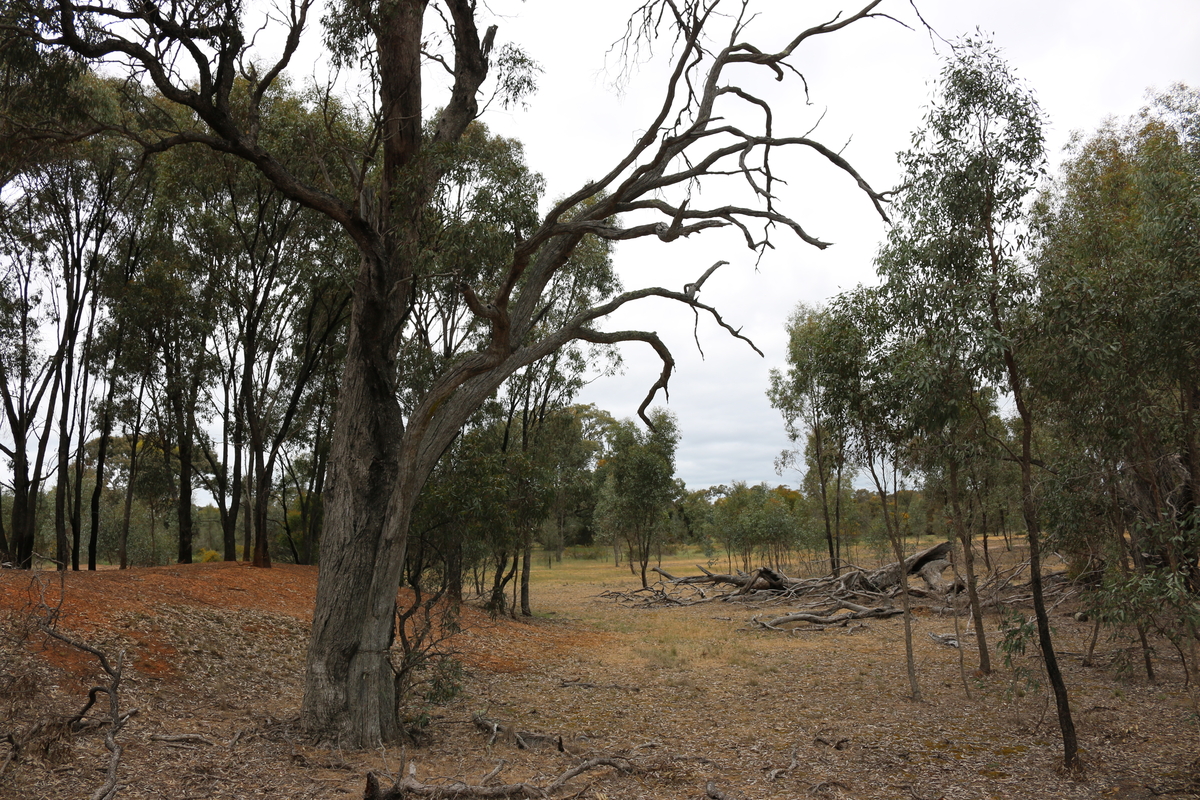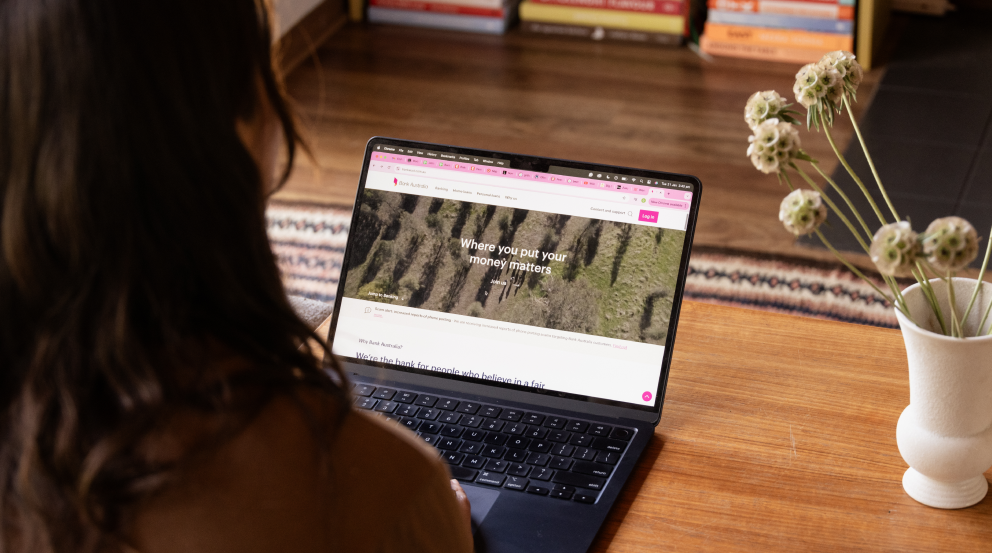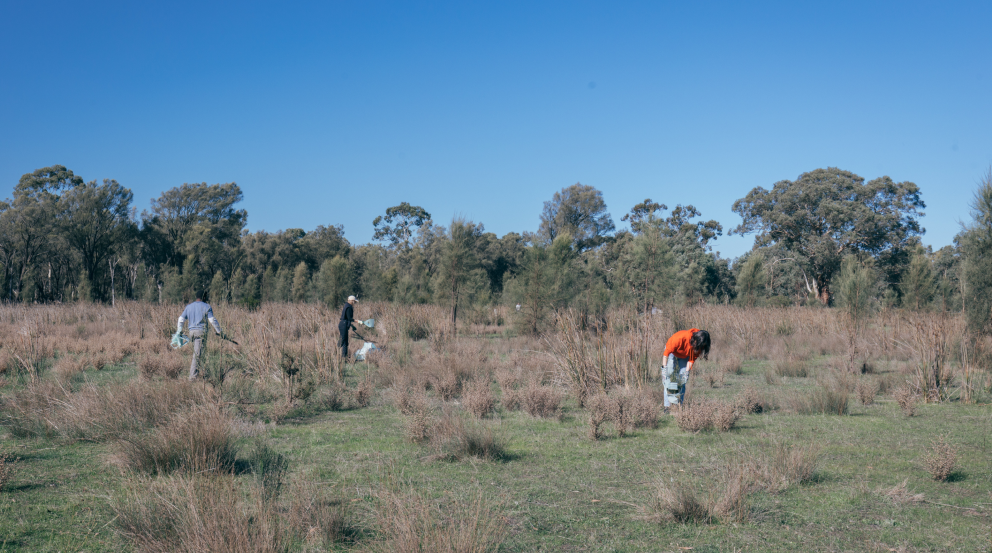From the “bonk bonk” of the Eastern Banjo Frog to the stunning turquoise stripes of the Blue-banded Bee, Bank Australia’s conservation reserve is teeming with the sounds and colours of 234 native animal species. On World Wildlife Day, our Nature and Biodiversity Manager Bram Mason shares some of his favourites.
Since 2008 Bank Australia has been caring for a conservation reserve in Western Victoria, where we seek to enhance biodiversity by both protecting and learning from the land. The 2000 hectare-reserve is managed in partnership with Greening Australia and Trust for Nature, and in consultation with Traditional Custodians through Barengi Gadjin Land Council. To mark World Wildlife Day, Bank Australia’s Nature and Biodiversity Manager Bram Mason highlights a small handful of the unique animals found on the land.

Shingleback Lizard
Known affectionately as the “stumpy” or “bobtail” lizard, this guy is the chunkiest of the blue tongues. Because it is naturally slow moving, unfortunately the Shingleback is often found injured (or worse) at the side of roads. “Their tail is a form of defence,” explains Bram. “Because it looks like their head, it creates a 50/50 chance that a predator will take their tail – enhancing their chance of survival.” They love to laze around and are often spotted basking in pairs along the internal tracks of the reserve.

Jacky Lizard
This little lizard – commonly called a “Jacky Dragon” – is very quick and can even run on its hind legs. Quite a sight to behold! It has a bright yellow mouth and, interestingly, the sex of its offspring is determined by the temperature of the nest in which the eggs are laid.

Echidna
As Australia’s most widespread native mammal, the Echidna’s don't often get the attention it deserves. But as Bram points out, this spikey little creature is a really important part of our ecosystem. “Echidnas are essential to maintain ant equilibrium and in turn are nature's mini bulldozers – turning over the soil, stimulating soil mycorrhiza and forming open nutrient rich areas for seeds to germinate.” And here’s a fun fact: a baby Echidna is called a puggle!

Little Eagle
As its name indicates, this is one of the smallest eagles in the world (although, it still has a wingspan of over one metre!) It is currently listed as a “vulnerable species” in Victoria, primarily due to threats to its habitat. It can be spotted gliding over wooded habitats searching for prey.

Red-tailed Black Cockatoo
Loud and proud, this critter is hard to miss! With its colourful tail plumage, it loves to hang out in flocks and is among some of the most spectacular looking (and sounding) of its species.

Blue-banded bee
A true little beauty of the bush, this native bee is identifiable for its stunning turquoise stripes. “It’s actually very inquisitive by nature,” says Bram, “and often seen hovering and inspecting people as they come into the bees habitat – before darting away to buzz pollinate another native flower.”

Eastern Banjo Frog
While not quite as cute as Kermit, this motley-coloured amphibian lights up many waterways in Eastern Australia, with its distinctive “bonk bonk” call echoing far and wide. If you’ve spent any time in the Vicotrian bush, it’s very likely you’ve heard it. “Although it's fairly common” says Bram,”it’s a real favourite of mine. Their rhythmic banjo-like call is calming and relaxing, and reminds me of camping as a child with my grandpa.”
Find out more about Bank Australia’s commitment to biodiversity and conservation.



.png)




